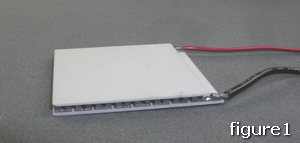In 1821 Thomas Johann Seebeck discovered the thermoelectric effect, which is the generation of electric current from heat. He discovered when a junction of two dissimilar metals are heated through a temperature gradient, the junction produces a small but measurable electric current. Twisting the ends of two dissimilar metal wires to produce an elongated junction one can create a junction that produces a few millivolts.
Inversely, when a voltage is applied to this junction, it creates a temperature difference discovered in 1834 by Jean – Charles Peltier and is known as the Peltier Effect.
Together these combined effects are called the Peltier–Seebeck effect and forms the basis of thermo-electric generators (TEG) and thermo-electric cooling (TEC).
Modern thermoelectric generators use PN junctions manufactured from semi-conductor materials instead of dissimilar metals, see figure 1. However many thermocouples still use dissimilar metals for their construction.
There are a number of electronic companies that offer surplus TEC modules, see suppliers list. Many TEC modules can be used as TEG modules. Although a TEC pressed into service as a TEG will have a lower efficiency than a TEG module. But a TEC still works well enough as a demonstration model.
The Future of Thermoelectric:
Volkswagen and BMW have manufactured a line of thermoelectric generators that are powered by the waste heat of their car’s internal combustion engine. By doing so, they can use a smaller alternator on the engine for its electrical power needs. This contributes to the car’s improved efficiency by reducing the work required of the engine.


Thermoelectric Power Generator
